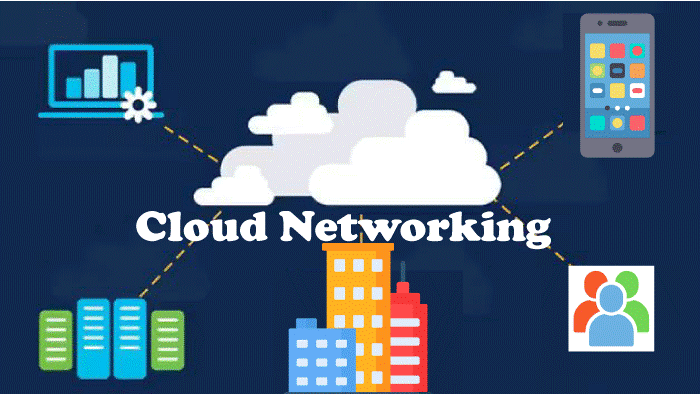In the digital age, data is one of the most valuable assets of any organization. As businesses and individuals continue to generate massive volumes of data daily, ensuring its security and privacy has become more challenging than ever. Traditional data storage and management methods, such as on-premises infrastructure, are increasingly being replaced by cloud-based solutions that promise greater flexibility, scalability, and cost efficiency. However, with the migration to the cloud comes heightened concerns about the security and privacy of sensitive data. This is where cloud networking solutions step in, offering enhanced protection against cyber threats and data breaches.
Key Takeaways
- Cloud networking solutions enhance data security and privacy through encryption, authentication, intrusion detection, and access control.
- The adoption of advanced models like Zero Trust and DDoS protection strengthens defenses against modern cyber threats.
- Data sovereignty, privacy tools, and compliance features ensure that organizations meet legal requirements while protecting sensitive information.
- Regular audits, monitoring, and best practices are essential for maintaining a secure and private cloud network environment.
What Is Cloud Networking?
Cloud Networking refers to the infrastructure and processes in the cloud computing environment that are involved in connecting and managing the network resources. It includes the design, deployment, and optimization of networks facilitating communication and data transfer between various services hosted on cloud platforms. Cloud networking facilitates organizations to establish secure, scalable, and high-performance network architectures following to their specific requirements. It involves implementing virtualized networking technologies, such as virtual private clouds (VPCs), software-defined networking (SDN), and load balancing, to ensure reliable connectivity, efficient resource utilization, and seamless integration with cloud services.
Why Cloud Networking?
It is in demand by many companies for its speedy and impervious delivery, fast processing, dependable transmission of information without any loss, and pocket-friendly set-up. Benefited corporations who select Cloud Networking consist of internet service providers, e-commerce, cloud service providers, community operators, and cloud service providers.
It permits users to boost their networks in accordance with necessities in cloud-based services. An actual cloud network provides high-end monitoring to globally positioned servers, controls site visitors’ors flow between interconnected servers, protects structures with superior network safety, and offers visibility to users by means of its centralized management.
Cloud Networking Basics
Cloud Networking basics include the fundamental principles and components which involving in establishing and managing network resources within a cloud environment. The following are the key aspects included in cloud networking basics:
- Virtualization
- Software-Defined Networking (SDN)
- Virtual Private Clouds (VPCs)
- Monitoring and Optimization
- Load Balancing:
Types Of Cloud Networking
Utilization of virtualized networking technologies over the cloud environment for managing network resource is known as cloud networking. Cloud networking provides scalability and centralized management of network resources. The following are the types of cloud networking:
1. Cloud Networking
Cloud Networking comes with utilizes virtualized networking technologies to manage network resources within a cloud environment, providing scalability and centralized management.
- Virutalized Infrastructure: It involves utilization of virtualized networking technologies for creating and managing the network resources over the cloud.
- Scalability And Flexibility: Coud Networking offers flexibility anbd scalability for organziations to dynamically adjust their network configurations to meet up their changing demands.
- Centralized Management: It provides centralized management and automation of network configurations for enhancing agility and reducing administrative overhead.
2. Multi Cloud Networking

- Interoperability: Facilitates connectivity and communication between multiple cloud environments and on-premises infrastructure.
- Traffic Distribution: Enables load balancing and traffic routing across diverse cloud platforms to optimize performance and resource utilization.
- Security and Compliance: Implements consistent security policies and compliance measures across multiple clouds, ensuring data protection and regulatory compliance.
3. Hybrid Cloud Networking
- Integration Of Environments: It develops a single network based architecture with linking public and private cloud environments with on premised infrastructure.
- Data Mobility: It helps with smoother transfer of workloads and data in between on-premise and cloud environments. It facilitates with resource optimization and agility.
Advantages of Cloud Networking
- On-Demand Self Service
- High Scalability
- Agility
- Multi-sharing
- Low Cost
- Services in pay per use Model
- High availability and Reliability
- Maintenance
Disadvantages of Cloud Networking
- Dependency on internet connectivity
- Security concerns
- Limited control
- Cost
- Lack of customization
Cloud Networking Services Examples
The following are the Cloud Networking Services Examples:
- Virtual Private Networking ( VPN ) In the Cloud: Setting the VPN services within the cloud environments helps for securing remote access and transfer the data.
- Hub and Spoke Network Topology: Establishment of Hub and spoke technology helps in centralizing the traffic management and in optimizing the resource utilization.
- Sofftware-Defined Networking (SDN): On usage of SDN technologies facilitates in dynamically manage and configure the network infrastructure in cloud environments for improving agility and scalability.
Use Cases Of Cloud Networking Services

The following are the use cases of Cloud Networking Services:
- Extended On-premises Networks: It facilitates with seamless integration of on-premise network infrastructure with cloud environments using VPNs for having secured communication and resource access.
- Automated Network Security: Implementing automated network security facilitates with automatic patch deployment and having enforced policy-based security measures.
- Traffic Inpection and Cloud Management: Implementation of hub-spoke network topology helps in efficiently managing the network traffic and fulfilling resource based specific needs such as isolation of customers for compliance or performance reasons.
Cloud Computing Vs Cloud Networking
The following is the comparison table of cloud computing and cloud networking:
| Aspect | Cloud Computing | Cloud Networking |
|---|---|---|
| Definition | It facilitates with delivery the services over the internet. | It facilitates with managing and optimizing network infrastructure. |
| Key Components | It contains components such as Virtual Machines, Storage, Databases | It contains components such as VPCs, SDN, Routing. |
| Benefits | Scalability, Cost-effectiveness, flexibility | Enhanced Security, efficient traffic management |
| Key Providers | AWS, Microsoft Azure, GCP | Cisco, VMware, cloud Providers |
| Use Cases | It helps in hosting applications, data analytics and AI/ML | It secures remote access, traffic routing and resource optimization. |
Why Should We care About Cloud Networking?
The following are the reasons to care about cloud networking:
- Enhanced Connectivity And Flexiblity: Cloud Networking provides seamless connectivity between on-premises and cloud environments by offering flexibility to access resources from anywhere, anytime and from any device.
- Improved Security and Compliance: Proper implementation of cloud networking solutions and security measures helps in encryption and access controls with ensuring protection of sensitive data with regulatory requirements.
- Cost Efficiency And Scalability: Cloud Networking supports organizations to scale their network infrastructure as per their needs. It provides cost effective solutions for both small and large enterprises.
Best Practices For Securing Data in the Cloud

To maximize the benefits of cloud networking solutions for data security and privacy, organizations must follow best practices, including:
- Implementing strong encryption for all sensitive data.
- Using multi-factor authentication and strong password policies.
- Regularly conducting security audits and vulnerability assessments.
- Educating employees on data security best practices and potential threats.
- Ensuring that cloud providers offer adequate SLAs (Service Level Agreements) for security and privacy.
- Leveraging compliance frameworks and tools to meet regulatory requirements.
What Make a Sucessful Multi Cloud Networking Strategy?
A successful multi-cloud networking strategy depends on seamless integration, strong security and efficient management. It involves in establishment of resilient connectivity between cloud platforms using technologies such as VPNs and SDN. On following the security measures such as encryption and access controls must be consistently applied across all clouds for safeguarding sensitive data.
Also Read : How Can AI And Machine Learning Enhance Cloud Security?
Conclusion
Cloud networking solutions are revolutionizing data security and privacy, offering organizations the tools and technologies necessary to protect their sensitive information in the digital landscape. From robust encryption and advanced authentication methods to network segmentation and compliance with privacy regulations, these solutions provide a comprehensive security framework that mitigates risks and ensures privacy. By adopting best practices and leveraging cloud networking solutions, organizations can safeguard their data, comply with regulations, and maintain the trust of their customers and stakeholders.
FAQs
What are cloud networking solutions?
Cloud networking solutions are technologies that help manage and optimize an organization’s network infrastructure in the cloud, including services like virtual networks, firewalls, SDN, and VPNs.
How do cloud networking solutions improve data security?
They provide encryption, advanced authentication, network segmentation, Zero Trust models, intrusion detection, and regular security audits, all of which protect data from threats.
What is the role of encryption in cloud security?
Encryption ensures that data is unreadable to unauthorized users, even if intercepted, by converting it into a secure format that can only be decoded with the correct key.
How do cloud networking solutions enhance privacy?
Cloud networking solutions protect privacy by providing tools like role-based access control, data anonymization, data loss prevention, and compliance with international privacy regulations.
Are cloud providers responsible for data security and privacy?
Cloud providers have a shared responsibility with customers. Providers secure the infrastructure, while customers must ensure proper configuration, encryption, and access controls.
What is Zero Trust security in cloud networking?
Zero Trust security assumes no device or user, inside or outside the network, should be trusted automatically. Every access request is verified before granting permission to any resource.
What is DDoS protection in the cloud?
DDoS protection helps mitigate Distributed Denial-of-Service attacks by identifying and blocking malicious traffic, ensuring the availability of services and the security of data.

